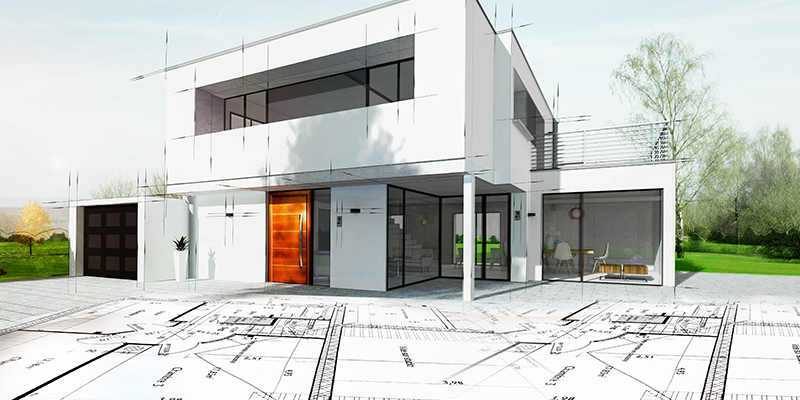When homeowners want to make an architectural change in HOAs, they often need to seek approval from the association. But, why is approval even needed? And what is the process for getting approval?
Why Approval Is Necessary for Architectural Change in HOAs
The chief objective of a homeowners association is to preserve property values in the community. To do this, associations must fulfill a number of obligations including enforcing architectural rules. These rules exist to maintain a consistent appearance among the homes in the community. This, in turn, boosts curb appeal and keeps property values high.
An HOA’s architectural guidelines are contained within the association’s governing documents, particularly the CC&Rs. Amending the CC&Rs usually requires approval from the membership. But, HOA boards often just need to pass a resolution to amend its operating rules. Thus, boards can add or edit architectural rules provided they don’t contradict the CC&Rs or any laws.
Homeowners associations come in all shapes and forms. As such, architectural guidelines can vary greatly from one to another. That being said, some of the most common examples of architectural guidelines include:
- What color or shade a home can be painted
- What materials roofs can be made with
- How tall fences can be
- Whether or not additional structures can be built (i.e. sheds, detached garages, decks, chicken coops)
Are HOA Architectural Guidelines Legal?
Homeowners associations typically do have the power to enact and enforce architectural guidelines. This power is granted to HOAs either by state laws or the governing documents (or both).
Homeowners in HOA communities have a contractual obligation to follow the rules of the association, including the architectural rules. When homeowners first buy a home in the development, they essentially enter an agreement with the association. Buying a home in the community also usually makes them an automatic member.
Because one may not like the rules in an HOA, it is important for buyers to first review the association’s governing documents prior to purchasing a home. Buyers can request these documents from the seller or the seller’s agent. If a buyer dislikes the rules, they can choose to back out of the sale.
HOA Architectural Committee Responsibilities
The HOA board is normally in charge of rule enforcement. Sometimes, though, boards will form a separate committee specifically to enforce the architectural standards of the HOA. The Architectural Control Committee is essentially responsible for overseeing any architectural change in HOA homes.
The exact scope of this committee can change depending on the association. But, they generally include the following duties:

- Manage the architectural application process
- Approve or deny architectural change applications (or recommend decisions to the board)
- Inspect the community for any breaches in the guidelines
- Enforce the architectural rules of the association in a consistent and fair manner
- Continuously review the architectural standards of the HOA and make recommendations on any adequate changes
- Educate homeowners about the architectural guidelines
- Always put the community’s best interests first in all things
Application and Approval Process for HOA Architectural Changes
As part of the association’s architectural guidelines, homeowners must usually obtain the approval of the board or architectural committee prior to making any changes. The exact procedure involved will depend on the HOA’s governing documents. But, they generally include these three steps: application submission, review, and decision.
1. Submission of Application and Supporting Documents
First, homeowners must complete an application form and submit any supporting documents. This application form should ask for the details of the project, including the materials and design that will be used. It should also contain the information of the contractor. Additionally, homeowners should submit blueprints, photos, or other plans. This will help the board or committee visualize the proposed change.
2. Review of the Proposal
The architectural committee is in charge of reviewing all applications to make sure they comply with the HOA’s guidelines. The committee must apply fair and consistent judgment when it comes to this step. Additionally, the committee must review applications in a timely manner. Committees should not delay this process. In some cases, there is even a deadline for making a decision depending on the governing documents.
3. Decision on Architectural Change in HOAs
In some associations, the architectural committee is responsible for approving or denying applications. Other times, the committee simply recommends a decision to the board, with the board making the ultimate call. A board’s decision is typically final unless it is in any way unfair, unreasonable, or arbitrary.
Whatever the decision may be, it is best to do it in writing. Furthermore, boards should also include an explanation if the application is rejected. If a homeowner’s request is denied, they can usually appeal within a set timeframe, though it depends on the governing documents.
What Happens When Homeowners Violate the Architectural Guidelines?
Where there are rules, there are rulebreakers. Whether intentionally or otherwise, there are always going to be homeowners who violate the architectural guidelines. But, what consequences are in store for those who break these rules?
 Once a violation has occurred, the association’s response typically begins with written notice. This notice of violation will contain the details of the infraction. Normally, homeowners will have the opportunity to correct the violation without further consequence, especially if it is their first violation. However, depending on state laws and the governing documents, some HOAs do proceed with a monetary fine.
Once a violation has occurred, the association’s response typically begins with written notice. This notice of violation will contain the details of the infraction. Normally, homeowners will have the opportunity to correct the violation without further consequence, especially if it is their first violation. However, depending on state laws and the governing documents, some HOAs do proceed with a monetary fine.
In many states, homeowners do have a right to a disciplinary hearing. That means they have a chance to appear before the board and explain their side of the story prior to the disciplinary action. In California, associations are legally required to hold such hearings. There are also notice requirements involved, so boards should make sure to review their state laws and governing documents to avoid legal liability.
At the hearing, homeowners can appeal the fine or any other disciplinary action (such as suspension of privileges). Afterward, the board will make a decision and provide written notice of the said decision to the homeowner.
For architectural violations, homeowners will usually need to remedy the violation to comply with the association’s standards. If an architectural change happens without the board or committee’s approval, homeowners will have to reverse the change at their own expense. Should they wish to restart the project again, they will need to seek approval first.
From Here on Out
Homeowners should familiarize themselves with the rules on architectural change in HOAs. In doing so, they can make sure they follow the guidelines set forth and avoid wasting time and money. Similarly, boards and committees should always act in good faith and enforce the rules in a consistent manner.
Keeping track of architectural change applications and violations can come as a challenge. Streamline your process with Condo Manager’s HOA management software. Get in touch with us today at (800) 626-1267 or contact us online for a free demo.
RELATED ARTICLES:
- HOA Architectural Requests: Keeping Track Of Them With An HOA Management Software
- 10 Most Common HOA Service Requests And How To Handle Them
- Condo Decorations Rules: Fair And Unfair Policies



